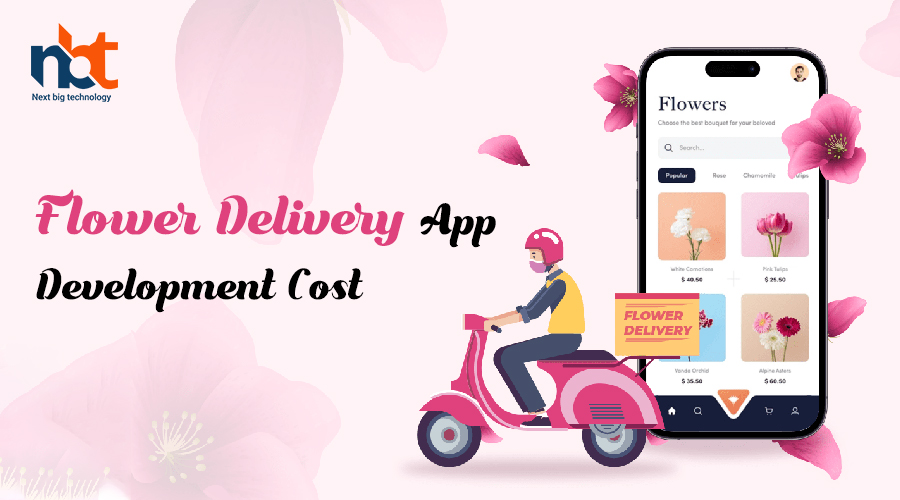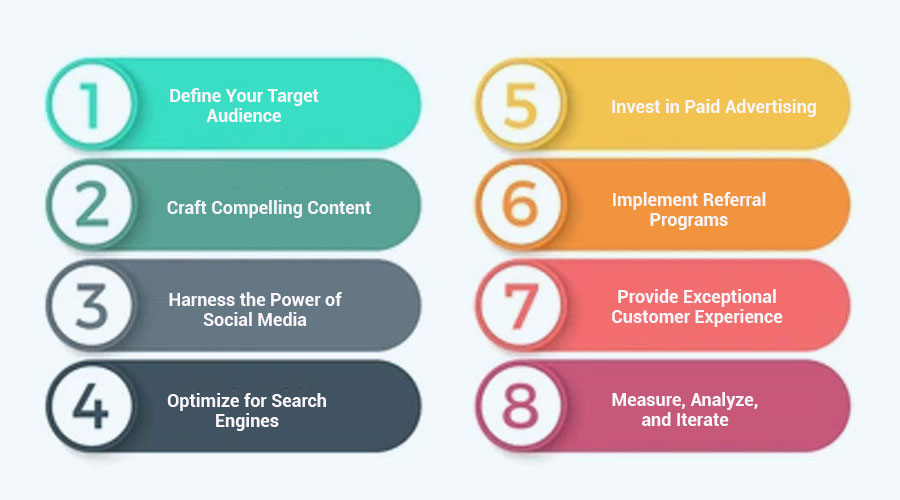Table of Contents
Understanding the Basics: Flower Delivery App Development
In today’s fast-paced world, convenience is key, especially when it comes to expressing emotions and sentiments through the timeless gesture of sending flowers. With the surge in technology, flower delivery has transcended traditional methods, paving the way for innovative solutions through flower delivery app development. This article serves as a guide to understanding the fundamentals of creating a seamless and efficient flower delivery application.
Understanding the Concept:
Flower delivery applications are digital platforms designed to connect customers with florists for hassle-free delivery of fresh blooms. These apps streamline the entire process, allowing users to browse through a diverse range of floral arrangements, select their preferred bouquet, and schedule delivery with just a few taps on their smartphones.
Key Features:
- User-Friendly Interface: The success of any app lies in its user interface. A well-designed interface that is intuitive and easy to navigate enhances the user experience, making it effortless for customers to browse, select, and order flowers.
- Comprehensive Catalog: A vast catalog featuring various types of flowers, arrangements, and customization options ensures that customers find the perfect bouquet for every occasion.
- Secure Payment Gateway: Integrating a secure payment gateway instills trust among users, facilitating seamless transactions while prioritizing data security.
- Delivery Tracking: Real-time order tracking keeps customers informed about the status of their delivery, ensuring transparency and reliability.
- Personalization: Offering personalized features such as special messages, customized arrangements, and reminder notifications adds a personal touch to the user experience, making it memorable for both the sender and the recipient.
- Feedback and Reviews: Incorporating a feedback system allows customers to share their experiences, providing valuable insights for continuous improvement.
Technical Aspects:
- Platform Selection: Choosing the right platform (iOS, Android, or both) depends on the target audience and market trends. Cross-platform development frameworks like React Native or Flutter offer the flexibility to develop apps for multiple platforms simultaneously, reducing time and cost.
- API Integration: Seamless integration with third-party APIs for payment processing, location services, and delivery tracking enhances the functionality of the app and enriches the user experience.
- Scalability: Building a scalable architecture ensures that the app can accommodate growing user demands and adapt to technological advancements without compromising performance.
- Security Measures: Implementing robust security measures, including data encryption, secure authentication protocols, and regular security audits, safeguards user information and prevents unauthorized access.
Marketing and Monetization:
- Targeted Marketing: Leveraging digital marketing strategies such as social media advertising, email campaigns, and influencer partnerships helps reach a wider audience and drive user engagement.
- Subscription Models: Offering subscription-based services with added benefits like discounts, exclusive offers, and priority delivery can generate recurring revenue streams and foster customer loyalty.
- Partnerships and Collaborations: Collaborating with local florists, event planners, and gift shops expands the business network, creating mutually beneficial partnerships and increasing brand visibility.
Factors Impacting Flower Delivery App Development Costs
In recent years, the demand for flower delivery apps has surged dramatically, driven by the convenience they offer in sending beautiful blooms to loved ones with just a few taps on a smartphone. However, for entrepreneurs and businesses looking to venture into the world of flower delivery app development, understanding the factors influencing the costs involved is crucial. Let’s delve into the key elements that impact the expenses associated with developing a flower delivery app.
- App Features and Functionality: The complexity and scope of features incorporated into the app play a significant role in determining development costs. Basic features such as user registration, browsing floral arrangements, placing orders, and payment processing are standard. However, additional features like real-time order tracking, personalized recommendations, integration with social media platforms, and multiple payment gateways can escalate the development expenses.
- User Interface (UI) and User Experience (UX) Design: An intuitive and visually appealing UI/UX design is essential for ensuring user engagement and retention. Investing in high-quality design elements, seamless navigation, and responsive layouts enhances the user experience but may increase development costs. Custom animations, transitions, and interactive elements can also contribute to the overall expenses.
- Technology Stack: The choice of technology stack significantly influences development costs. Factors such as the platform (iOS, Android, or both), backend infrastructure, database management system, programming languages, and third-party integrations impact the overall expenses. Opting for cutting-edge technologies or frameworks may require higher upfront investment but can result in a more scalable and robust application.
- Security and Compliance Requirements: Ensuring the security of user data, payment transactions, and compliance with industry regulations are paramount in the development of flower delivery apps. Implementing robust security measures, such as encryption protocols, secure authentication mechanisms, and compliance with GDPR or PCI-DSS standards, adds to the development costs but is essential for building trust and credibility among users.
- Scalability and Future Maintenance: Planning for scalability and future maintenance is crucial for the long-term success of the app. Anticipating future growth and incorporating scalability features from the outset may involve higher initial costs but can save expenses on future upgrades and enhancements. Additionally, ongoing maintenance, bug fixes, and updates are ongoing expenses that should be factored into the overall budget.
- Integration with Third-Party Services: Integrating with third-party services such as payment gateways, SMS notifications, geolocation services, and flower suppliers can streamline app functionality but may incur additional costs in terms of licensing fees, API usage charges, and development efforts required for seamless integration.
- Testing and Quality Assurance: Thorough testing and quality assurance are essential for ensuring the reliability, performance, and functionality of the app across various devices and platforms. Investing in comprehensive testing methodologies, including manual testing, automated testing, and usability testing, helps identify and rectify any issues early in the development process, thereby reducing the overall costs of post-launch fixes and updates.
Design and User Interface: Crafting a Seamless Experience
In the dynamic landscape of digital platforms, the significance of design and user interface (UI) cannot be overstated. It’s not just about creating something visually appealing; it’s about crafting an experience that seamlessly integrates functionality, aesthetics, and user interaction. In this article, we delve into the art of designing a user interface that offers a truly immersive and intuitive experience for every user.
Understanding User Needs: The foundation of exceptional design lies in understanding the needs and preferences of the end-users. Before diving into the creative process, it’s crucial to conduct thorough research to gain insights into the target audience. What are their demographics? What are their pain points and motivations? By understanding the users’ behaviors and expectations, designers can tailor the interface to meet their specific needs effectively.
Simplicity is Key: In today’s fast-paced digital world, simplicity reigns supreme. A cluttered interface overwhelms users and hampers their ability to navigate seamlessly. Therefore, simplicity should be the guiding principle throughout the design process. Streamline the interface, prioritize essential elements, and eliminate unnecessary clutter. Remember, simplicity not only enhances user experience but also facilitates faster load times and improved performance.
Visual Hierarchy and Navigation: Effective navigation is the cornerstone of a seamless user experience. A well-defined visual hierarchy guides users through the interface, directing their attention to the most important elements first. Utilize visual cues such as color, size, and placement to differentiate between various elements and establish a clear flow of information. Intuitive navigation ensures that users can find what they’re looking for effortlessly, reducing frustration and increasing engagement.
Consistency breeds Familiarity: Consistency is key to creating a cohesive and intuitive user interface. Maintain consistency in design elements such as colors, typography, icons, and spacing across all pages and screens. Consistent design not only enhances aesthetics but also fosters familiarity, making it easier for users to navigate the interface confidently. Whether it’s the placement of buttons or the use of terminology, maintaining consistency throughout the interface is essential for a seamless user experience.
Responsive Design for Accessibility: In today’s multi-device world, responsive design is no longer optional; it’s imperative. A responsive interface adapts seamlessly to different screen sizes and resolutions, ensuring optimal viewing experiences across desktops, laptops, tablets, and smartphones. By prioritizing responsive design, designers can reach a wider audience and deliver a consistent experience regardless of the device being used. Accessibility should always be at the forefront of design considerations, ensuring that every user, regardless of their device or abilities, can access and interact with the interface effortlessly.
Continuous Iteration and Improvement: The journey towards crafting a seamless user experience is an ongoing process. Designers must embrace a mindset of continuous iteration and improvement, gathering user feedback, analyzing metrics, and making refinements accordingly. User preferences and technologies evolve rapidly, necessitating constant adaptation and optimization. By staying attuned to user feedback and industry trends, designers can refine the interface iteratively, ensuring that it remains relevant, efficient, and delightful for users.
Backend Infrastructure: Scaling for Performance and Security
In today’s digital landscape, where user demands and cyber threats are constantly evolving, optimizing backend infrastructure for both performance and security is paramount. As businesses grow and traffic increases, ensuring that your backend can scale efficiently becomes crucial. Let’s delve into the strategies for scaling backend infrastructure while maintaining optimal performance and robust security measures.
- Distributed Architecture: Embracing a distributed architecture is key to scaling backend infrastructure. By distributing workloads across multiple servers or nodes, you can handle increased traffic without sacrificing performance. Implementing load balancers further enhances scalability by evenly distributing incoming requests among available resources.
- Microservices: Adopting a microservices architecture enables modular development and deployment, allowing teams to independently scale and update components. This approach enhances agility and scalability, as each service can be scaled based on specific demands without affecting the entire system.
- Horizontal Scaling: Instead of vertically scaling by upgrading individual servers, horizontal scaling involves adding more servers or nodes to your infrastructure. Cloud platforms offer elastic scalability, allowing you to dynamically allocate resources based on demand. Autoscaling capabilities ensure that your backend can handle fluctuations in traffic automatically.
- Caching Mechanisms: Leveraging caching mechanisms such as Redis or Memcached can significantly improve performance by storing frequently accessed data in memory. This reduces the need to fetch data from databases or external sources, resulting in faster response times. Additionally, content delivery networks (CDNs) can cache static assets closer to users, reducing latency and improving overall performance.
- Database Optimization: Optimizing database performance is crucial for scaling backend infrastructure. Utilize techniques such as indexing, query optimization, and sharding to distribute database load across multiple servers. Consider using NoSQL databases for highly scalable applications that require flexible data models and horizontal scaling capabilities.
- Security Measures: When scaling backend infrastructure, security should remain a top priority. Implement robust authentication and authorization mechanisms to ensure that only authorized users can access sensitive data and resources. Employ encryption protocols such as SSL/TLS to secure data in transit, and implement proper access controls to prevent unauthorized access to backend systems.
- Monitoring and Analytics: Deploy comprehensive monitoring and analytics tools to track the performance and security of your backend infrastructure in real-time. Monitor key metrics such as response times, error rates, and resource utilization to identify potential bottlenecks and security vulnerabilities. Proactive monitoring allows you to address issues promptly and optimize performance and security continuously.
- Regular Audits and Penetration Testing: Conduct regular security audits and penetration testing to identify and address vulnerabilities in your backend infrastructure. Collaborate with security experts to simulate cyber attacks and ensure that your systems can withstand potential threats. Regular audits help maintain compliance with industry standards and regulations while enhancing overall security posture.
Customization Options: Tailoring the App to Your Brand
In today’s highly competitive digital landscape, branding is everything. From small startups to multinational corporations, establishing a unique and recognizable brand identity is essential for success. One powerful way to reinforce your brand image and connect with your audience is through customized mobile applications. Tailoring your app to reflect your brand identity not only enhances user experience but also strengthens brand loyalty and recognition. In this article, we’ll explore the importance of customization options and how they can elevate your app to new heights.
Understanding Brand Identity: Before delving into customization options, it’s crucial to have a clear understanding of your brand identity. Your brand is more than just a logo or color scheme; it encompasses your company’s values, mission, and personality. Every interaction with your audience should reflect these core elements to create a cohesive brand experience.
Why Customization Matters: Generic, one-size-fits-all apps simply don’t cut it in today’s market. Users expect personalized experiences that resonate with them on a deeper level. By customizing your app to align with your brand identity, you create a sense of familiarity and trust with your audience. Customization also allows you to differentiate your app from competitors and stand out in a crowded marketplace.
Tailoring the User Interface: The user interface (UI) plays a significant role in shaping the overall user experience. From colors and fonts to navigation menus and icons, every element of the UI should reflect your brand’s aesthetics. Whether your brand is sleek and modern or quirky and playful, the UI should embody these characteristics to create a cohesive brand experience.
Branded Content and Imagery: In addition to the UI, incorporating branded content and imagery can further reinforce your brand identity. From splash screens and loading animations to in-app graphics and animations, every visual element should be carefully crafted to align with your brand’s style and tone. This not only enhances the overall look and feel of the app but also reinforces brand recognition and recall.
Personalized Messaging and Communication: Effective communication is key to building strong relationships with your audience. By customizing in-app messaging and notifications, you can speak directly to your users in a way that resonates with them. Whether it’s welcoming new users, announcing updates, or delivering personalized offers, tailored messaging helps foster a sense of connection and engagement.
Feedback and Iteration: Customization doesn’t end once your app is launched. Gathering feedback from users and iterating based on their input is essential for ongoing success. Pay attention to user behavior, listen to their feedback, and make adjustments as needed to ensure that your app continues to reflect your brand identity and meet the evolving needs of your audience.
Timeframe Considerations: From Concept to Launch
In the dynamic landscape of business, the journey from concept to launch can be exhilarating yet daunting. Timeframe considerations play a pivotal role in this process, dictating the pace and efficiency of bringing an idea to fruition. Whether developing a new product, service, or project, mastering the art of managing timeframes is essential for success. Let’s delve into how to navigate this crucial aspect of the entrepreneurial voyage.
Understanding the Concept: Every successful venture begins with a concept—an innovative idea or solution to address a specific need or problem. However, the journey from conceptualization to realization is often rife with challenges. It requires a clear understanding of the market, target audience, competition, and feasibility. Before embarking on the journey, thorough market research and validation are imperative to ensure that the concept holds promise and aligns with market demands.
Setting Realistic Goals and Milestones: Once the concept is solidified, the next step is to outline a roadmap with realistic goals and milestones. This involves breaking down the project into manageable phases, each with its objectives and deadlines. By setting achievable milestones, teams can maintain focus and momentum, ensuring steady progress towards the ultimate goal. However, it’s crucial to strike a balance between ambition and realism, avoiding overly aggressive timelines that could compromise quality or burn out team members.
Effective Resource Management: Timeframe considerations are intrinsically linked to resource allocation—be it human, financial, or technological. Optimizing resource management is essential for staying on track and within budget. This entails identifying key resources required at each stage of the project and allocating them judiciously. Additionally, leveraging technology and automation can streamline processes, saving valuable time and effort.
Embracing Agile Methodologies: In today’s fast-paced business environment, traditional linear approaches to project management often fall short. Agile methodologies offer a flexible and adaptive framework that is well-suited to dynamic projects with evolving requirements. By embracing iterative development cycles and continuous feedback loops, teams can respond swiftly to changes, mitigate risks, and deliver value incrementally. Agile empowers teams to prioritize tasks based on their impact and urgency, fostering a culture of collaboration and innovation.
Mitigating Risks and Contingency Planning: No project is without risks, and unforeseen challenges can derail even the best-laid plans. Mitigating risks requires proactive identification and assessment of potential threats, followed by the implementation of mitigation strategies. Additionally, developing robust contingency plans allows teams to respond swiftly to unexpected setbacks without derailing the entire project. By building resilience into the project framework, teams can navigate uncertainties with confidence and agility.
Continuous Monitoring and Adaptation: Timeframe considerations are not static but evolve throughout the project lifecycle. Continuous monitoring and adaptation are essential to ensure that the project stays on course and remains aligned with strategic objectives. Regular progress reviews, performance metrics, and feedback mechanisms enable teams to identify bottlenecks early and make necessary course corrections. By fostering a culture of transparency and accountability, organizations can optimize efficiency and maximize outcomes.
Testing and Quality Assurance: Ensuring a Smooth User Experience
In today’s digital age, where user experience reigns supreme, ensuring a smooth and seamless journey for every user has become paramount for businesses. Whether it’s a mobile application, a website, or software, the success of any digital product hinges on its ability to meet user expectations and deliver exceptional experiences. This is where testing and quality assurance (QA) play a pivotal role.
Testing and QA are indispensable components of the software development lifecycle, aimed at identifying and rectifying defects, bugs, and inconsistencies before they reach the end-users. By meticulously scrutinizing every aspect of the product, from functionality to performance and usability, testing and QA teams contribute significantly to enhancing the overall quality and reliability of the software.
One of the primary objectives of testing and QA is to ensure that the product meets the specified requirements and functions as intended. This involves conducting various types of testing, including functional testing, which verifies whether each feature of the software operates correctly according to the predefined specifications. Additionally, non-functional testing, such as performance testing and security testing, evaluates the system’s responsiveness, scalability, and vulnerability to potential threats.
Moreover, testing and QA extend beyond the technical aspects of the product to encompass the user experience (UX). A seamless UX encompasses factors such as intuitive navigation, responsive design, and error-free interactions, all of which contribute to user satisfaction and retention. Hence, UX testing focuses on assessing the product from the end-user’s perspective, identifying pain points, and making necessary improvements to optimize the overall experience.
Furthermore, with the proliferation of devices and platforms, compatibility testing has become indispensable to ensure that the software performs consistently across different environments, browsers, and screen sizes. By conducting thorough compatibility testing, businesses can cater to a diverse user base and eliminate any barriers that may hinder accessibility or usability.
Incorporating testing and QA into the development process from the outset not only mitigates risks but also saves time and resources in the long run. Early detection and resolution of issues prevent costly rework and potential damage to the brand’s reputation. Moreover, adopting an agile approach to testing enables teams to adapt to changing requirements and deliver updates iteratively, ensuring continuous improvement and alignment with user expectations.
Maintenance and Support: Post-Launch Responsibilities
Congratulations! Your project has finally launched, marking the culmination of countless hours of hard work and dedication. However, the journey doesn’t end here. In fact, it’s just the beginning. Once your product or service is out in the world, it requires ongoing maintenance and support to ensure its continued success. In this article, we’ll delve into the importance of post-launch responsibilities, focusing particularly on maintenance and support tasks.
The Significance of Maintenance: Maintenance is like tending to a garden; neglect it, and weeds will inevitably overrun your once-thriving landscape. Similarly, without proper maintenance, your product may succumb to bugs, glitches, and performance issues, tarnishing its reputation and frustrating users. Regular maintenance involves keeping software up-to-date, fixing bugs, optimizing performance, and ensuring compatibility with evolving technologies. By investing in ongoing maintenance, you safeguard your product’s longevity and user satisfaction.
The Role of Support: Imagine purchasing a new gadget only to find that there’s no customer support available when you encounter an issue. Frustrating, isn’t it? That’s why providing reliable support is paramount in post-launch responsibilities. Whether it’s through email, phone, or live chat, offering prompt and effective support enhances customer trust and loyalty. Moreover, support isn’t just about troubleshooting; it’s also about listening to user feedback, addressing concerns, and continuously improving the user experience.
Key Maintenance and Support Tasks:
- Bug Fixes and Updates: Regularly identify and address software bugs to ensure smooth functionality. Additionally, stay abreast of technological advancements and release updates to enhance features and security.
- Performance Optimization: Monitor system performance and identify areas for optimization to improve speed, responsiveness, and scalability.
- Security Enhancements: Implement robust security measures to protect against cyber threats and data breaches, safeguarding both your users and your reputation.
- User Training and Documentation: Provide comprehensive user training materials and documentation to empower users and minimize support inquiries.
- Feedback Collection and Analysis: Actively solicit user feedback and analyze it to identify trends, pain points, and areas for improvement.
The Benefits of Prioritizing Maintenance and Support:
- Enhances User Satisfaction: By promptly addressing issues and providing reliable support, you foster a positive user experience, leading to greater satisfaction and retention.
- Safeguards Reputation: Proactive maintenance and support demonstrate your commitment to quality and reliability, enhancing your brand’s reputation and credibility.
- Maximizes ROI: Investing in post-launch responsibilities may require resources, but the long-term benefits, including reduced churn and increased customer lifetime value, far outweigh the costs.
- Drives Continuous Improvement: By listening to user feedback and iteratively enhancing your product, you stay ahead of the curve and maintain a competitive edge in the market.
Marketing and User Acquisition: Building a Customer Base
In the dynamic realm of business, where competition is fierce and attention spans are short, mastering marketing and user acquisition is paramount to building a robust customer base. Whether you’re a startup aiming to carve your niche or an established enterprise seeking expansion, effective strategies in this realm can be the difference between stagnation and exponential growth. In this article, we delve into key tactics and approaches to help you elevate your marketing game and acquire users effectively.
- Define Your Target Audience: Before embarking on any marketing initiative, it’s crucial to have a clear understanding of your target audience. Who are they? What are their pain points? What solutions are they seeking? By conducting thorough market research and creating detailed buyer personas, you can tailor your marketing efforts to resonate with your intended audience.
- Craft Compelling Content: Content remains king in the digital landscape. Whether it’s blog posts, social media updates, videos, or podcasts, creating high-quality, relevant content is essential for attracting and retaining users. Your content should not only inform and educate but also entertain and inspire action.
- Harness the Power of Social Media: With billions of active users, social media platforms offer unparalleled opportunities for reaching and engaging with your target audience. Develop a strong presence on platforms frequented by your audience and leverage features such as targeted advertising, influencer partnerships, and user-generated content to expand your reach and drive user acquisition.
- Optimize for Search Engines: Search engine optimization (SEO) plays a crucial role in ensuring that your brand remains visible to potential customers. Conduct keyword research to identify relevant search terms and optimize your website and content accordingly. Regularly publishing fresh, valuable content and earning backlinks from authoritative sources can improve your search engine rankings and attract organic traffic.
- Invest in Paid Advertising: While organic methods are effective, paid advertising can provide an immediate boost to your user acquisition efforts. Platforms like Google Ads, Facebook Ads, and LinkedIn Ads offer precise targeting options that allow you to reach users based on demographics, interests, and online behavior. Allocate your advertising budget strategically, monitoring performance metrics closely to optimize your campaigns for maximum ROI.
- Implement Referral Programs: Harness the power of word-of-mouth marketing by incentivizing your existing customers to refer their friends and family. Offering discounts, rewards, or exclusive perks for successful referrals not only encourages customer loyalty but also expands your customer base organically.
- Provide Exceptional Customer Experience: In today’s hyper-connected world, positive customer experiences are invaluable for driving user acquisition and retention. Ensure that every interaction with your brand, whether online or offline, exceeds customer expectations. Personalized communication, prompt resolution of inquiries, and seamless transaction experiences can turn satisfied customers into loyal brand advocates.
- Measure, Analyze, and Iterate: Continuous improvement is key to staying ahead in the ever-evolving landscape of marketing and user acquisition. Implement robust analytics tools to track the performance of your campaigns and user acquisition channels. Analyze data insights to identify areas for optimization and experimentation. By constantly iterating and refining your strategies based on data-driven insights, you can adapt to changing market dynamics and stay ahead of the competition.
Top Flower Delivery App Development Cost Companies
In today’s fast-paced world, where convenience reigns supreme, the demand for efficient and user-friendly flower delivery apps is on the rise. With people increasingly turning to technology to simplify their lives, businesses are capitalizing on this trend by investing in the development of innovative flower delivery applications. However, determining the cost of developing such apps can be a complex task, as it depends on various factors such as features, functionality, platform, and the development company chosen for the project. In this article, we delve into the world of flower delivery app development and explore some of the top companies leading the way in this domain.
-
-
Next Big Technology:

Focus Area
- Mobile App Development
- App Designing (UI/UX)
- Software Development
- Web Development
- AR & VR Development
- Big Data & BI
- Cloud Computing Services
- DevOps
- E-commerce Development
Industries Focus
- Art, Entertainment & Music
- Business Services
- Consumer Products
- Designing
- Education
- Financial & Payments
- Gaming
- Government
- Healthcare & Medical
- Hospitality
- Information Technology
- Legal & Compliance
- Manufacturing
- Media
-
- WillowTree: WillowTree is another prominent player in the app development industry, renowned for its innovative approach and commitment to excellence. The company specializes in creating engaging mobile experiences across various industries, including e-commerce and on-demand services. With WillowTree, clients can expect a comprehensive flower delivery app equipped with advanced features such as real-time tracking, secure payment options, and personalized recommendations. While the cost of development with WillowTree may be on the higher side, clients can rest assured knowing they’re investing in a top-tier solution backed by years of expertise.
- Fueled: Fueled is a design and development agency that prides itself on delivering cutting-edge digital solutions that drive results. With a focus on creativity and innovation, Fueled has earned a reputation for developing visually stunning and highly functional mobile applications. When it comes to flower delivery app development, Fueled offers a range of services, including UI/UX design, backend development, and quality assurance testing. While the cost of working with Fueled may be significant, clients can expect a premium product that stands out in a crowded market.
- Konstant Infosolutions: Konstant Infosolutions is a global technology company that specializes in delivering scalable and robust mobile solutions to clients worldwide. With a team of skilled developers and designers, Konstant Infosolutions offers end-to-end flower delivery app development services, from concept to launch. The company prides itself on its transparent pricing model, ensuring that clients get the most value for their investment. While the cost of development with Konstant Infosolutions may vary based on project requirements, clients can expect a high-quality app that meets their business objectives.
- MindInventory: MindInventory is a full-service app development company that caters to the diverse needs of clients across the globe. With a focus on innovation and quality, MindInventory has carved a niche for itself in the competitive app development landscape. When it comes to flower delivery app development, MindInventory offers comprehensive services, including ideation, design, development, and post-launch support. While the cost of working with MindInventory may vary depending on project complexity, clients can expect a seamless and feature-rich solution that delights users.
FAQs On Flower Delivery App Development Cost
In today’s digital age, the floristry industry has undergone a significant transformation with the emergence of flower delivery apps. These platforms offer convenience, accessibility, and a seamless shopping experience for users. However, for entrepreneurs and businesses looking to venture into the realm of flower delivery app development, understanding the associated costs is crucial. To shed light on this aspect, let’s delve into some frequently asked questions (FAQs) on flower delivery app development costs.
1. What factors influence the cost of flower delivery app development? The cost of developing a flower delivery app depends on various factors such as features, complexity, design, platform (iOS, Android, or both), technology stack, developer rates, and location. Advanced features like real-time tracking, personalized recommendations, secure payment gateways, and integration with third-party APIs contribute to higher development costs.
2. What are the essential features of a flower delivery app? A successful flower delivery app should incorporate features such as user registration and login, browsing and searching for flowers, ordering and payment processing, order tracking, push notifications, reviews and ratings, admin dashboard, inventory management, and customer support. Additionally, integrating features like augmented reality for virtual flower arrangement preview can enhance user engagement but may add to the development expenses.
3. How much does it cost to develop a flower delivery app? The cost of flower delivery app development can vary widely based on the aforementioned factors. On average, the development cost for a basic flower delivery app with essential features ranges from $10,000 to $50,000. However, for a more comprehensive app with advanced functionalities, the cost can escalate to $100,000 or more.
4. Is it cheaper to develop a flower delivery app in-house or outsource it to a development company? The decision to develop a flower delivery app in-house or outsource it depends on factors like budget, expertise, time constraints, and project complexity. While developing in-house may provide more control over the process, it requires a skilled development team and entails higher costs in terms of salaries, infrastructure, and maintenance. On the other hand, outsourcing to a reputable development company can offer cost-effectiveness, access to specialized skills, faster time-to-market, and ongoing support and maintenance.
5. How can I ensure cost efficiency during the app development process? To ensure cost efficiency during flower delivery app development, it’s essential to prioritize features based on user needs and market demand. Conducting thorough market research, creating a detailed project scope, opting for agile development methodologies, and leveraging reusable components and open-source technologies can help optimize costs without compromising on quality. Additionally, negotiating pricing with development vendors and choosing a scalable architecture can mitigate future expenses.
6. What are the ongoing expenses associated with maintaining a flower delivery app? Apart from the initial development costs, maintaining a flower delivery app incurs ongoing expenses such as hosting, updates and enhancements, bug fixes, security patches, customer support, and marketing. It’s crucial to allocate a budget for regular maintenance and updates to ensure the app remains competitive, secure, and user-friendly in the long run.
Thanks for reading our post “Flower Delivery App Development Cost”. Please connect with us to learn more about Best Flower Delivery App Development.






















